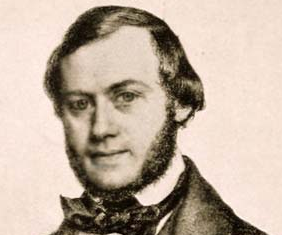 Ferdinand David 1810-1873
Ferdinand David 1810-1873Durata: 16 min__Rec: BIS-CD-378__Publ: Edition Tarrodi__Lindberg Performances: 375
 Ferdinand David 1810-1873
Ferdinand David 1810-1873
In Leipzig in the beginning of the 19th century there was a musician called Carl Traugott Queisser who according to roumors could play any wind instrument from the piccolo flute to the bass trombone, and every string instrument from the violine to the double bass. His main instruments however,seems to have been the trombone and the violine. At the same time he was the concert master of the Euterpe orchestra in the city and solotrombonist in the famous Gewandhaus orchestra under Felix Mendelsson-Bartholdy. Queisser was a good friend of Mendelsson, as was the concert master in the Gewandhaus orchestra: Ferdinand David. They offen met and played string quartet, and at one point in the 1830s Mendelsson promised Queisser a trombone concerto. However time went quickly, and Mendelsson fell in love, got married and forgot his promise. When Queisser reminded him of the fact, he suggested the then 25year old Ferdinand David to write the concerto, and in 1837 the Concertino Op 4 by Ferdinand David was premiered in Gewandhaus by Queisser under the baton of Mendelsson. The piece was a hugh success, and trombonists all over Europe started to play the concerto. The second movement, that David also made a version for violine and piano of, was in played at the funeral of Ferdinand David, and considered the most important of his works. David has been most famous for being a violine teacher, and the one to premiere Mendelssons famous violine concert, but he was no doubt a very talented composer with a great amount of self critic. Too much of this one could say, as he withdrew his first opera "Hans Sachs" despite some success with this, and decided to stop compose and primarily work as a teacher and violinist. The piece received its US premiere in 1923 by Cincinati Symphony Orchestra under Fritz Reiner, but since then the original orchestra material has been lost. In 1985 this was reconstructed by Christian Lindberg, based on an existing piano reduction, and Christian Lindberg has also composed a specific cadenza for this Edition on Edition Tarrodi.